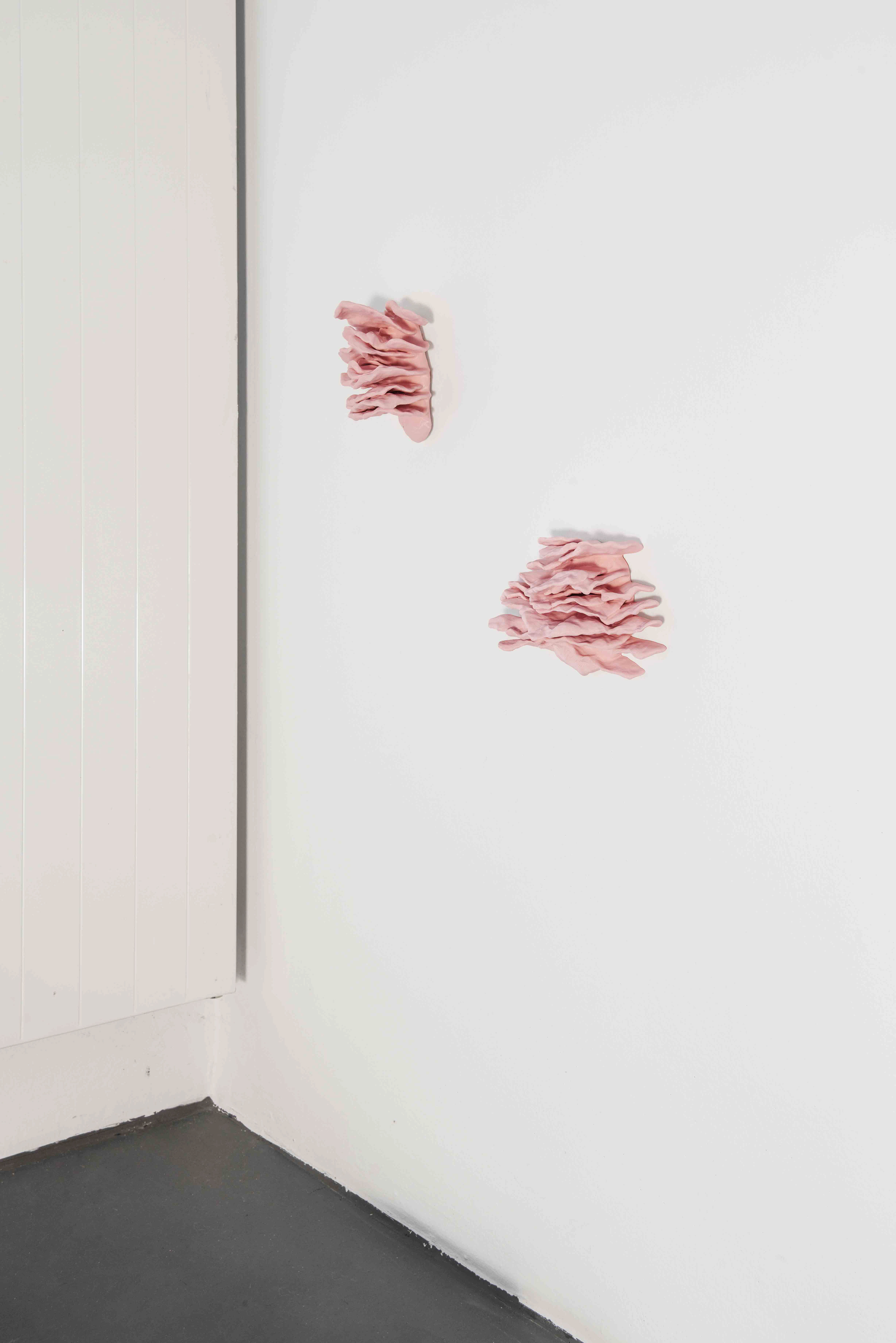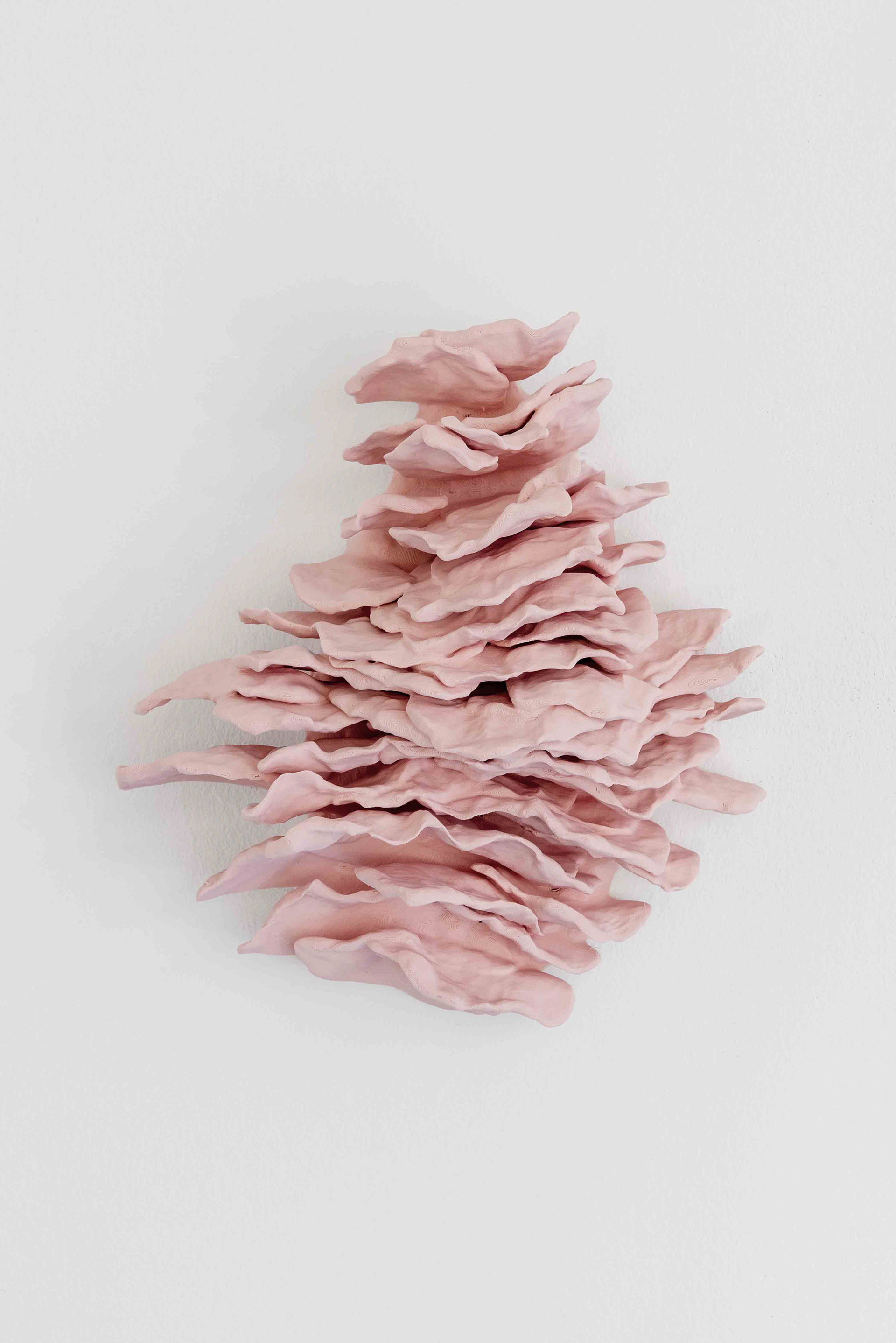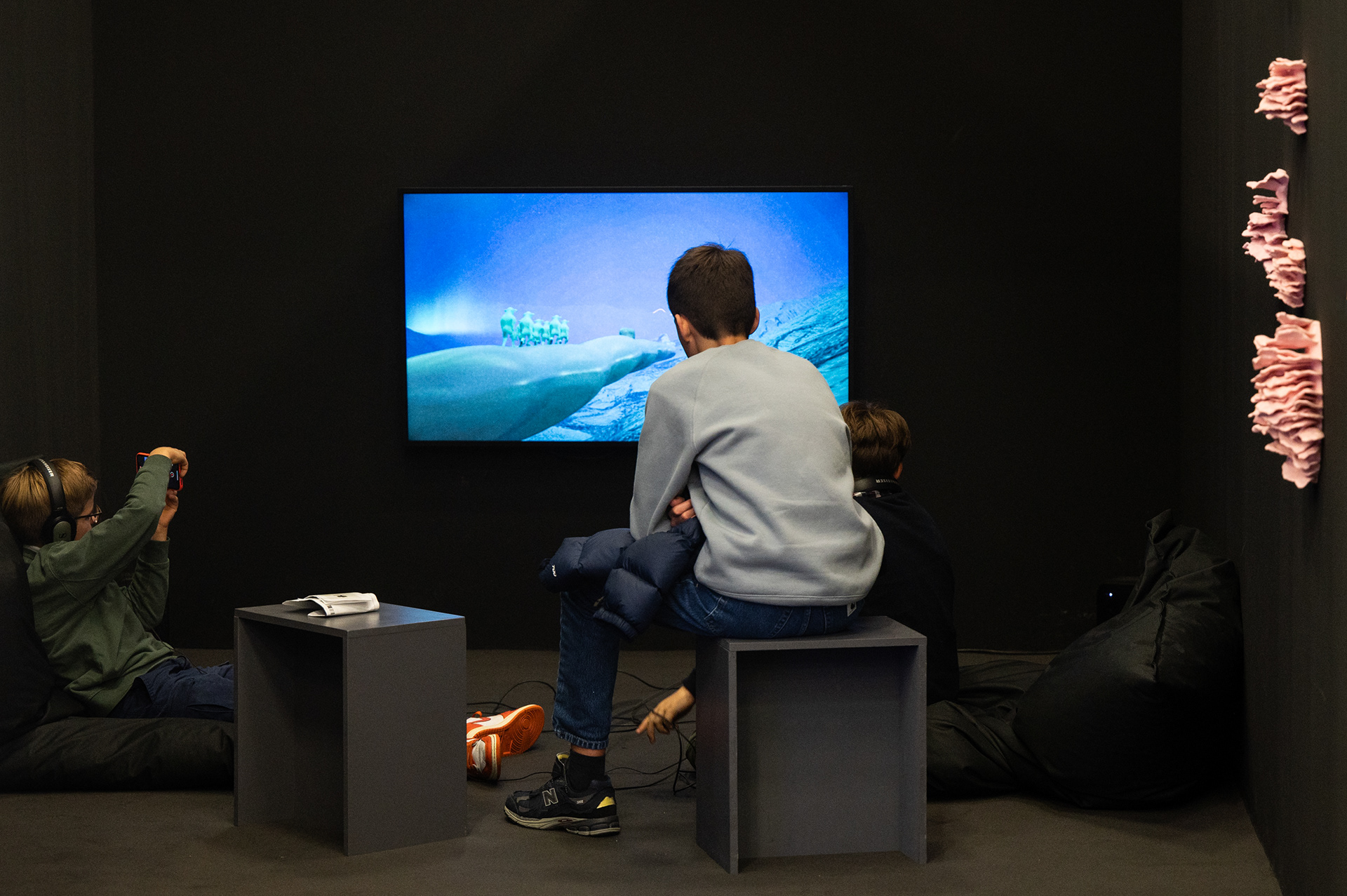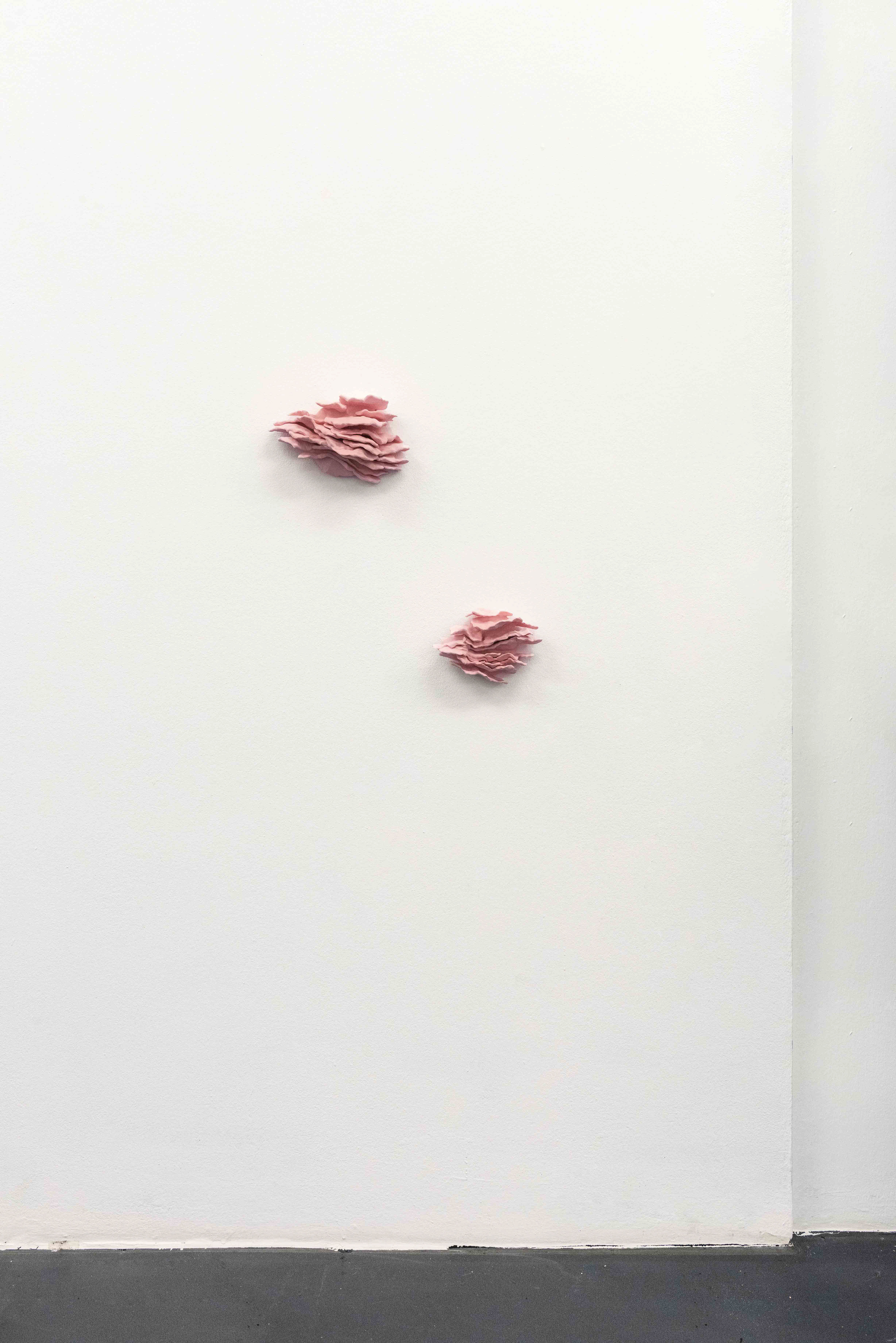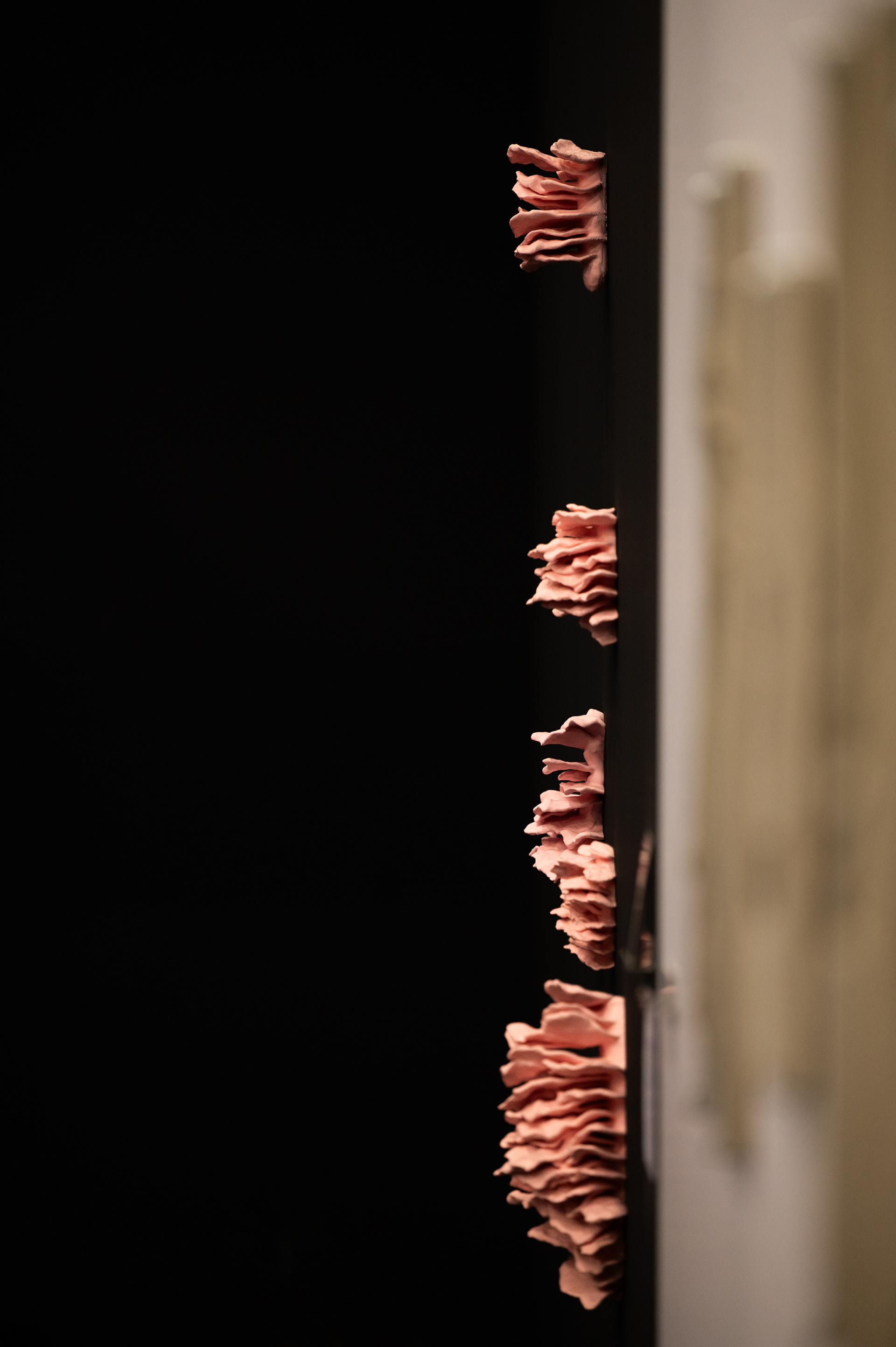When moving in real three-dimensional space as a human being, walking in the woods and hunting for mushrooms means being exposed to a constant and often repetitive input of visual patterns, depending on the season and region, usually a mixture of dry leaves on the ground and lots of branches, small plants and soil. Contrary to the romantic image of a walk in the woods as a kind of wellness trip, e.g. to get away from working in an office in front of a screen, it can be a similar experience. I am not questioning the actual health benefits of being outside and looking around the forest, even if it means looking mainly at the ground. I just want to focus on the labour aspect and the sense of fatigue and repetition of patterns over a long period of time. For this sculptural work I have created a computer graphics tool that can generate my own interpretation of mushroom colonies. Put simply, this is done by populating points in space and layering vector direction, flow and volume operations over and over again until a certain level of rules can produce infinite variations of this phenomenon. These fruiting bodies are loosely based on any species of fungus that needs living or dead wood as a feeding ground, such as the sulphur fungus.
While I drew inspiration from the different types of mushroom flushes, I wanted this system to be relatively simple in its function to track how attributes such as food, water, weather, and anything else that can affect a specific growth behaviour of a mushroom patch. This approach of creating these rules in such a way that they do not easily fall apart is very cumbersome, and in most commercial asset creation pipelines it would probably be replaced by simply scanning or capturing a set of mushroom fruiting bodies and randomly scattering them on surfaces, as this is easy to do and after a certain initial group size and amount of scattering and randomness it usually looks very realistic very quickly. As you can get bored with randomness, and this method of algorithmic design is for me about the joy of creating data in empty space, I started replacing these steps with noise patterns, which come from people interpreting natural algorithms for computer graphics, and this gives a person creating a digital tool like this much more control over the behaviour of where things should appear in space (position), where they should go (direction), and what rules they need to follow to create a certain shape over and over again (noise), with the same rules influencing that shape, but never creating an exact replica. Instead, this system creates each fruiting body as a unique fragment of a larger, possibly infinite, phenomenon that can be recognised as belonging to the other individual pieces when compared side by side.
